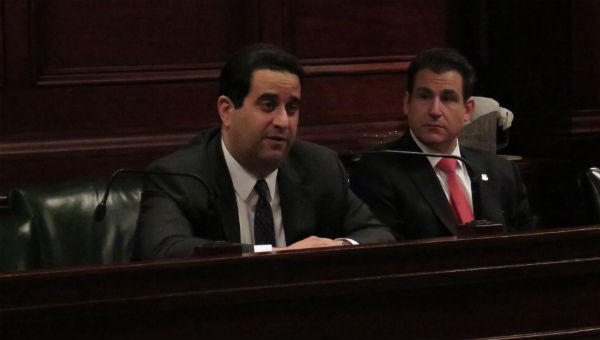-
Tips for becoming a good boxer - November 6, 2020
-
7 expert tips for making your hens night a memorable one - November 6, 2020
-
5 reasons to host your Christmas party on a cruise boat - November 6, 2020
-
What to do when you’re charged with a crime - November 6, 2020
-
Should you get one or multiple dogs? Here’s all you need to know - November 3, 2020
-
A Guide: How to Build Your Very Own Magic Mirror - February 14, 2019
-
Our Top Inspirational Baseball Stars - November 24, 2018
-
Five Tech Tools That Will Help You Turn Your Blog into a Business - November 24, 2018
-
How to Indulge on Vacation without Expanding Your Waist - November 9, 2018
-
5 Strategies for Businesses to Appeal to Today’s Increasingly Mobile-Crazed Customers - November 9, 2018
Improvements to state child abuse hotline
The Department of Human Services (DHS) Secretary Ted Dallas today announced several improvements to ChildLine, the department’s child abuse hotline, as well as to the child abuse history clearance process.
Advertisement
The changes announced Thursday come in the wake of an audit that found 42,000 calls to ChildLine past year went unanswered or were dropped, and a third of all calls that were answered were not properly documented or tracked.
The agency said in a news release Thursday that it added employees, improved training and implemented technology changes to properly record all calls and make it easier for staff to process calls. Those changes caused myriad problems, including child-abuse clearances, obtained by volunteers throughout the state, taking an average of 26 days to get completed when they are required to be done in 14 days.
Two-dozen changes to abuse reporting laws that went into effect at the beginning of 2015 – in the wake of the Jerry Sandusky child sexual abuse case – increased the agency’s workload.
The abandoned or deflected rate is down to 2 percent. There was a 14 percent increase in calls to ChildLine, a 39 percent increase in reports of suspected child abuse and a 162 percent increase in the number of clearances requested. Some callers hung up after being placed on hold and others were dropped because the hold queue was full. It said it lacked the resources and staff to handle the surge. They now are being processed on time, in an average of 1.6 days.
“That includes some further upgrades in technology, better training and also better ways, through the information technology, to track all the calls that we have”, he said.
Advertisement
“I sounded the alarm in May because even one unanswered phone call means there could be a child in a life-threatening situation who needs help”, DePasquale said in a statement.





























